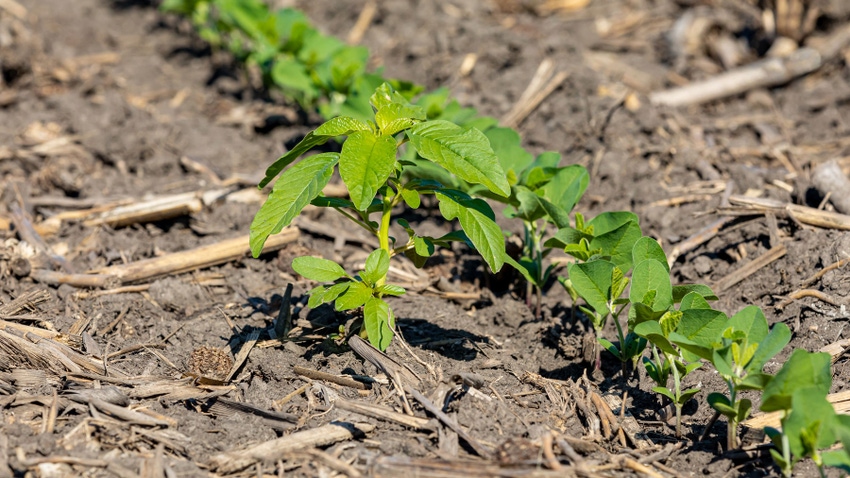June 13, 2023

Pesticide applicators need to be aware of the cutoff dates for dicamba use on soybeans in Minnesota.
The Minnesota Department of Agriculture says Engenia by BASF, Tavium by Syngenta and XtendiMax by Bayer are the only dicamba formulations labeled for use on dicamba-tolerant soybeans. In Minnesota, the cutoff date that dicamba products could be applied on DT soybeans was June 12 south of Interstate 94, but farmers north of Interstate 94 have until June 30 to still apply the herbicide.
In addition to the cutoff date, these three dicamba products cannot be applied in Minnesota when the air temperature is over 85 degrees F at the time of application, or if the forecasted high temperature of the nearest available location exceeds 85 degrees. Forecasted temperature must be recorded at the start of the application. This restriction is for the entire state.
When applying these products, applicators must have all applicable labels in their possession. Compliance with these Minnesota-specific restrictions and other restrictions listed on the product label is mandatory.
This year’s cutoff dates were first announced on Jan. 10 and follow the state restrictions of the 2022 growing season. Because of those dates, the MDA saw a significant decrease in alleged drift complaints.
Drift complaints trend downward
Since dicamba was first registered for use on dicamba-tolerant soybeans in the 2017 growing season, the MDA has fielded complaints each year of alleged off-site movement onto neighboring property. The chemical is highly volatile and can damage nontarget plant species through spray drift and/or volatilization. The annual total reports for alleged drift were:
2022. 32
2021. 304
2020. 128
2019. 20
2018. 51
2017. 249
“We understand there have been weather challenges this spring that may have caused concerns for growers who want to use this crop management tool,” says MDA Commissioner Thom Petersen. “However, delaying applications to try and control later emerging weeds may result in poor performance, and later applications present other risks. We wish to preserve this tool for farmers without impacting neighboring crops, homes, farms and gardens.”
Dicamba is most effective early in the growing season. Product labels recommend application on small broadleaf weeds that are up to 4 inches tall.
To manage weeds after the June 12 or June 30 cutoff dates, herbicides from Group 9 (glyphosate), Group 2 (Pursuit, Classic, FirstRate), and Group 14 (Flexstar, Cobra, Cadet, Ultra Blazer) can be used. If soybeans contain the Enlist trait, broadleaf weeds can be controlled with Enlist One or Enlist Duo herbicides. Other 2,4-D formulations cannot be used postemergence on Enlist soybeans. If herbicide-resistant weeds such as waterhemp are present, follow University of Minnesota Extension recommendations on layering of residual herbicides such as Dual, Outlook, Warrant and Valor.
The postemergence dicamba products for use on soybeans are “restricted use pesticides” for retail sale to and for use only by certified applicators.
Source: Minnesota Department of Agriculture
You May Also Like




